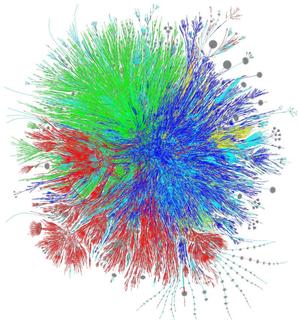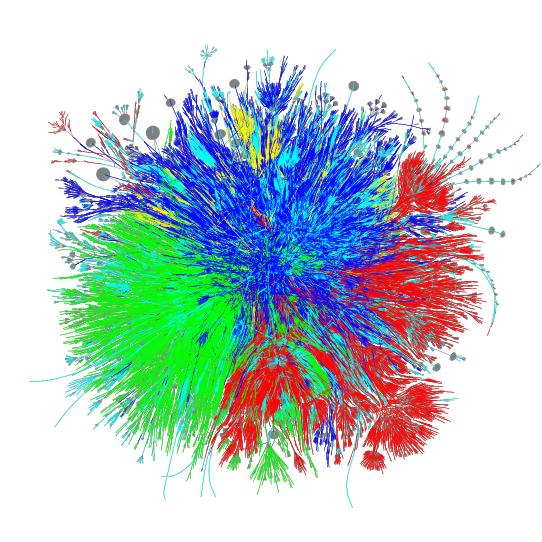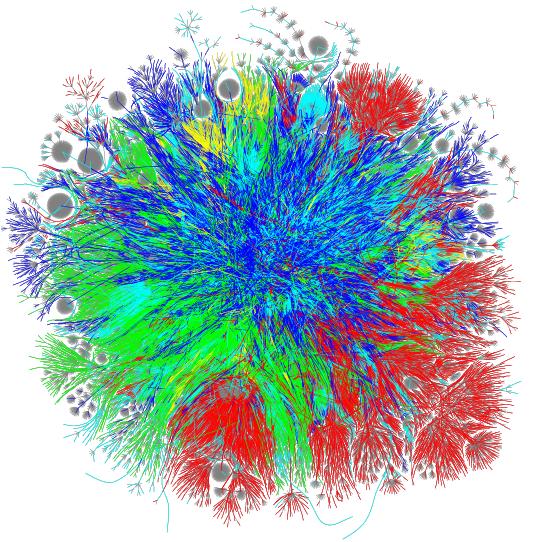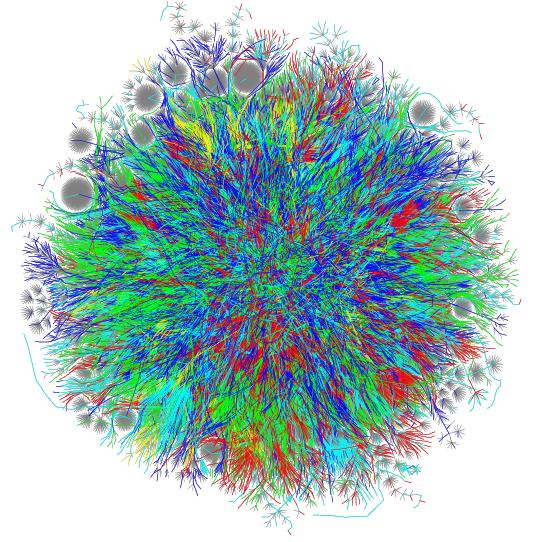
This graph(?) is by far our most complex. It is using over 5 million edges and has an estimated 50 million hop count. We will be producing more maps like this on a dialy basis. We still have yet to fix the color system, but all in due time.
Graph Colors:
|
Asia Pacific - Red Europe/Middle East/Central Asia/Africa - Green North America - Blue Latin American and Caribbean - Yellow RFC1918 IP Addresses - Cyan Unknown - White |



